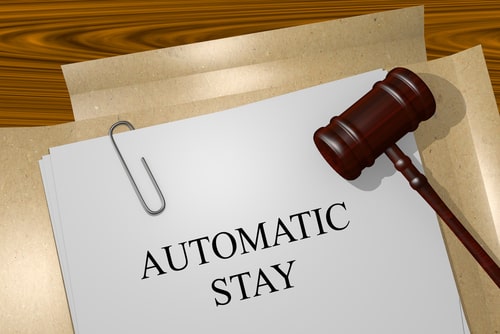The Automatic Stay Explained
 As soon as a bankruptcy petition is filed, the automatic stay immediately goes into effect to halt most collection activities and allow the debtor to organize their finances. The automatic stay is an injunction imposed against certain creditors who want to start or continue taking action against a debtor or the debtor’s property. It is important to note that in some situations, there may be no automatic stay at all, or there may be only an automatic stay if the debtor obtains a court order that imposes the automatic stay. A Texas bankruptcy lawyer can help you figure this out and what you may experience specifically for your case.
As soon as a bankruptcy petition is filed, the automatic stay immediately goes into effect to halt most collection activities and allow the debtor to organize their finances. The automatic stay is an injunction imposed against certain creditors who want to start or continue taking action against a debtor or the debtor’s property. It is important to note that in some situations, there may be no automatic stay at all, or there may be only an automatic stay if the debtor obtains a court order that imposes the automatic stay. A Texas bankruptcy lawyer can help you figure this out and what you may experience specifically for your case.
What Exactly Does the Automatic Stay Do?
An automatic stay presses pause. It freezes any efforts by creditors and debt collectors to collect on debts that came due before the bankruptcy was filed. They cannot file lawsuits, garnish wages, repossess cars or homes, shut off utilities, send demand letters, make collection calls, or take any other steps to enforce, collect, or create liens against debts owed before filing. The purpose is to bring everything to a screeching halt so that debtors have some breathing room under bankruptcy court protection to get their affairs in order.
Which People Does the Stay Protect?
The automatic stay does not shield only the filer. It also applies automatically to certain other parties connected to the debtor, including co-signers or guarantors on consumer debts. For example, creditors cannot attempt to collect from the debtor’s spouse or other relatives. In Chapter 13 cases, the stay extends to protect individuals who were listed as creditors by the debtor. In all chapters, community property owned jointly with a spouse is shielded from creditor collection efforts.
How Long Does the Automatic Stay Remain in Effect?
The stay goes into effect immediately upon filing the case and, in most instances, continues in force until the bankruptcy case is closed, dismissed, or the debtor receives a discharge.
However, creditors do have a process to ask the bankruptcy court to grant limited relief from the stay if they have cause.
What Would Count as a Cause for Seeking Stay Relief?
There are a number of scenarios where a creditor, whose hands are otherwise tied by the stay, might seek permission from the court to take some action against the debtor.
Some common reasons include:
- As the court requires, the debtor has failed to make ongoing payments towards a secured asset like an auto loan or mortgage.
- This risks property loss to foreclosure or repossession if payments cannot resume.
- The debtor has failed to maintain insurance or property tax obligations on assets named in the bankruptcy.
- The creditor needs stay relief to complete pending state court litigation that was already in process when the bankruptcy interrupted it.
- The creditor learns the debtor fraudulently transferred assets to third parties before the bankruptcy filing to shield them from creditors.
- If the bankruptcy judge agrees to grant stay relief, it allows only that particular creditor to proceed with specified collection activities against the debtor or their property.
Get in Touch with a San Antonio, TX Bankruptcy Lawyer
If you feel overwhelmed by your financial circumstances, the automatic stay and bankruptcy could provide the relief you need. A Schertz, TX bankruptcy attorney can help you navigate the best way forward. Contact Law Offices of Chance M. McGhee at 210-342-3400 to schedule a no-cost consultation.






